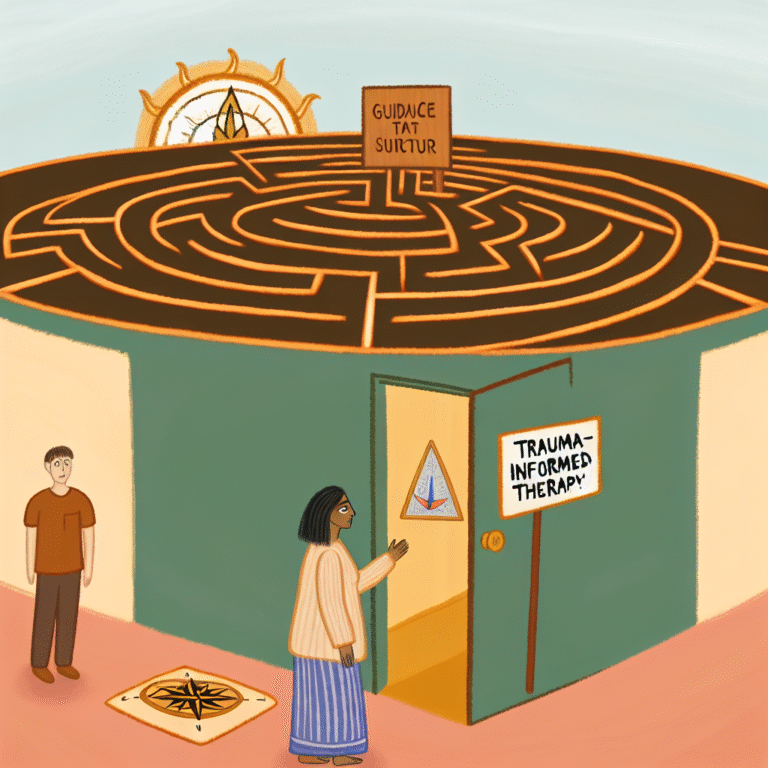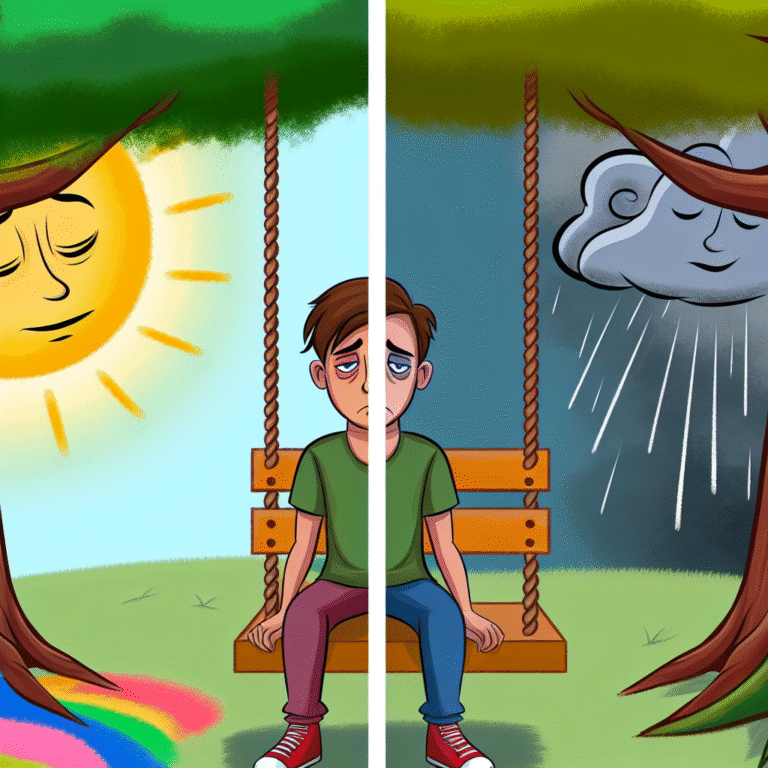
Sleep Soundly: Why Cognitive Behavioral Therapy is Your Best Bet Against Insomnia
Introduction
Picture this: it’s 2 AM, and you find yourself staring at the ceiling, your mind racing through a million thoughts, while the clock seems to mock you with its relentless ticking. If you’ve ever experienced sleepless nights like this, you are not alone. Insomnia affects millions worldwide, and for many, traditional solutions like over-the-counter medications or herbal remedies offer little relief. But here’s the good news: Sleep Soundly: Why Cognitive Behavioral Therapy is Your Best Bet Against Insomnia is gaining recognition as a transformative approach to conquering sleep challenges.
In this article, we will explore not only the effectiveness of Cognitive Behavioral Therapy for Insomnia (CBT-I) but also the science behind it, real-world applications, and actionable insights to help you reclaim your sleep.
Understanding Insomnia
What is Insomnia?
At its core, insomnia is a condition characterized by persistent difficulty in falling asleep, staying asleep, or waking up too early and not being able to go back to sleep. According to the American Academy of Sleep Medicine, about 30% of adults experience insomnia symptoms, with 10% suffering from chronic insomnia.
Types of Insomnia
Insomnia can be classified into several types:
- Acute Insomnia: Short-term sleep disturbances usually triggered by stress or life changes.
- Chronic Insomnia: Long-term insomnia lasting for at least three times a week over three months.
- Onset Insomnia: Difficulty falling asleep at the beginning of the night.
- Maintenance Insomnia: Trouble staying asleep through the night.
Understanding the nuances of insomnia is crucial because it helps in tailoring effective interventions, particularly through Cognitive Behavioral Therapy.
What is Cognitive Behavioral Therapy?
Cognitive Behavioral Therapy (CBT) is a well-established psychological treatment that focuses on changing negative patterns of thought and behavior. Unlike medication, which often addresses the symptoms of insomnia, CBT-I targets the underlying causes, promoting healthier sleep habits.
Key Components of CBT-I
CBT-I typically includes several core techniques:
- Cognitive Restructuring: Identifying and challenging negative thoughts associated with sleep.
- Sleep Restriction: Limiting time spent in bed to enhance sleep efficiency.
- Stimulus Control: Associating the bed with sleep rather than wakefulness.
- Sleep Hygiene: Enhancing the sleep environment with clean, dark, and quiet conditions.
These components work synergistically to combat insomnia, encouraging a healthier relationship with sleep.
The Science Behind CBT-I: Why It Works
Studies show that CBT-I is effective for a wide range of individuals suffering from insomnia, regardless of age or underlying conditions. Research has illustrated that with CBT-I, 70-80% of patients report significant improvements in sleep and daytime functioning.
Neurobiological Underpinnings
Understanding the brain’s role in sleep can illuminate why Sleep Soundly: Why Cognitive Behavioral Therapy is Your Best Bet Against Insomnia may be the best approach. The amygdala, responsible for emotional responses, and the prefrontal cortex, associated with logic and reasoning, interact in complex ways that can affect sleep quality. CBT-I helps to recalibrate these neural pathways, essentially rewiring how we respond to sleep-related stressors.
Case Study: The Efficacy of CBT-I
Case Study: A 45-year-old woman experienced chronic insomnia characterized by racing thoughts and anxiety about her job performance, often leading to exhaustion during the day. After participating in an 8-week CBT-I program, she reported not only improved sleep quality but also decreased anxiety levels and heightened energy. Her experience illustrates how CBT-I can address both the psychological and physiological factors contributing to insomnia.
Table: Key Research Findings on CBT-I
| Study Focus | Results | Conclusion |
|---|---|---|
| American Journal of Psychiatry (2015) | 75% improvement in sleep quality | CBT-I is more effective than sleep medication |
| Journal of Clinical Sleep Medicine (2016) | Sustained effects after 12 months | CBT-I provides lasting change |
| Sleep (2019) | Improved daytime functioning | Enhances quality of life, not just sleep |
Real-World Applications of CBT-I
Adapting CBT-I for Individual Needs
CBT-I is not a one-size-fits-all solution; it can be tailored to fit individual lifestyles and preferences. For instance, someone with a busy schedule might find value in digital CBT applications designed to provide flexible access to therapeutic techniques.
Case Study: A 32-year-old marketing executive implemented a mobile CBT-I app during her daily commute. By practicing cognitive restructuring and sleep hygiene techniques, she reported falling asleep 30 minutes faster and waking up feeling more refreshed within weeks.
Group Therapy vs. Individual Therapy
Another popular approach is group CBT-I therapy, where individuals suffering from insomnia share experiences and support each other. This format not only facilitates learning but can also provide a sense of accountability.
Common Myths About CBT-I and Sleep
Myth 1: CBT-I is Only for Severe Insomnia
While it is indeed effective for chronic sleep problems, anyone experiencing sleep disturbances can benefit from CBT-I. Even mild insomnia can have profound effects on daily functioning.
Myth 2: Medications are More Effective than CBT-I
Many believe that medication offers quicker relief. However, CBT-I addresses the root causes, leading to deeper, more sustainable changes.
The Role of Sleep Hygiene
No discussion about conquering insomnia is complete without mentioning the importance of sleep hygiene—practices that promote uninterrupted sleep.
Top Sleep Hygiene Tips
- Consistent Schedule: Go to bed and wake up at the same time daily.
- Comfortable Environment: Ensure your bedroom is conducive to sleeping—dark, cool, and quiet.
- Limit Screens Before Bed: Blue light interferes with melatonin production; aim to unplug an hour before bedtime.
Conclusion
The relationship with sleep is intricate and often fraught with challenges, but recognizing and dismantling the barriers to restful sleep is possible. Sleep Soundly: Why Cognitive Behavioral Therapy is Your Best Bet Against Insomnia underscores a vital truth: tackling insomnia requires a comprehensive and holistic approach tailored to individual needs.
With the right tools at your disposal—specifically, principles drawn from CBT—I you can rediscover the tranquility of a good night’s rest. Remember, insomnia isn’t just a sleep issue; it’s a multifaceted challenge. Confronting it with science-backed methods can lead not only to better sleep but to improved overall well-being.
FAQs
1. How long does CBT-I take to work?
CBT-I typically requires 4-8 sessions over several weeks, with noticeable improvements often seen within the first few weeks.
2. Can CBT-I be done online or through an app?
Absolutely! Many digital platforms offer structured CBT-I programs that can be conveniently accessed anytime.
3. Is CBT-I suitable for children?
CBT-I can be adapted for children and adolescents, and certain techniques help address their unique sleep challenges.
4. What if I don’t respond to CBT-I?
If CBT-I doesn’t yield the desired results, it’s important to consult a sleep specialist for alternative therapies or further assessments.
5. Is CBT-I better than medication for insomnia?
Research suggests that while medications may provide immediate relief, CBT-I offers long-term solutions and fewer side effects, making it a preferable option for many.
By understanding Sleep Soundly: Why Cognitive Behavioral Therapy is Your Best Bet Against Insomnia, you’re taking the first crucial steps towards reclaiming peaceful and restorative sleep. Don’t let insomnia dictate your life—embrace strategies that empower you toward restful nights and rejuvenated days.















